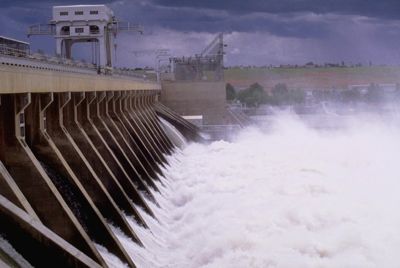forum
library
tutorial
contact

Scientists say Oregon's Spill Proposal
Not Ready for Prime Time
by Bill Rudolph
NW Fishletter, February 20, 2014
|
the film forum library tutorial contact |

|
Scientists say Oregon's Spill Proposal
by Bill Rudolph
|
 The independent science panel tasked with judging the merits of a proposed 10-year spill test at federal dams is not convinced the action would boost fish returns as proponents have claimed, or if the region can even determine whether or not it would benefit them, given the long list of variables that affect salmonids from the time they leave the river until they come back, years later.
The independent science panel tasked with judging the merits of a proposed 10-year spill test at federal dams is not convinced the action would boost fish returns as proponents have claimed, or if the region can even determine whether or not it would benefit them, given the long list of variables that affect salmonids from the time they leave the river until they come back, years later.
"The spill experiment proposal does not provide enough evidence for the ISAB to conclude that the experiment includes an adequately researched hypothesis," said the review by the Independent Scientific Review Board, in its Feb. 20 report. "A complete study design, including detailed hypotheses and review of the literature, was not presented to the ISAB. Additional effort is needed to fully vet the experimental spill hypotheses and methodology."
The state of Oregon, the Nez Perce Tribe and some environmental groups have pushed the spill proposal as a new amendment to the region's fish and wildlife program, saying the 10-year "test" could increase adult returns to recovery levels, reaching smolt-to-adult returns (SARs) in the 4-percent range.
Supporters backed their call for the spill test with a controversial analysis by some state, tribal and U.S. Fish and Wildlife Service scientists involved in the Comparative Survival Study (CSS) process, that estimated the rosy SARs if spring spill levels at federal dams in the lower Snake and Columbia rivers were allowed to rise enough for total dissolved gas levels to reach 125 percent or gas caps in dam tailraces. Current levels are capped at 120 percent.
But the ISAB said such an important proposal requires a complete description of a study design that addressed issues raised during recent reviews by BPA, NOAA and others. The panel listed most of these concerns in its report.
The spill test may not result in increased SARs as the justification for the proposed test is based on correlative models that do not establish causality.
There may be inadequate information gained to justify the cost due to study design limitations and lack of a detailed study and monitoring plan.
The spill test could result in unintended consequences, including:
The report noted that comparing SARs during the experimental period when gas levels are in the 125-percent range to pre-test SARs "may not be an adequate control because ocean and environmental conditions are likely to be considerably different. Ocean conditions have a major impact on SARs beyond in-river factors. The models attempt to account for ocean effects with independent variables such as the PDO, but considerable variability undoubtedly remains, which will lower the power and reliability of the test. The CSS may be aware of this, but it would be worthwhile to discuss the issue in a proposal and justify the use of SARs to assess results and testing hypotheses in a realistic time frame."
Despite all the criticism, the ISAB said the spill proponents "should be encouraged to prepare a more complete and detailed proposal that addresses issues and concerns that have been put forward by the Action Agencies and stakeholders, partly because details of the study have yet to be described in a document."
The scientists said that several iterations of the proposal may be needed to fully vet issues and provide a rigorous scientific review. The report said the proposal had two main conceptual issues; the lack of an experimental control group; and low statistical power to detect effects given empirical estimates of variation in survival estimates and the survival process itself.
Some regional stakeholders breathed a sigh of relief at the ISAB's review, because they have voiced concern that fishing and conservation groups might use the spill proposal as a wedge to litigate over the next hydro BiOp, slated for completion in 2018. "The ISAB's findings today on the spill test should put the final nail in the coffin of this irresponsible proposal," said Terry Flores, executive director of Northwest RiverPartners, a coalition of BPA customers and river users. "The ISAB concluded the proposal is deeply flawed and would potentially have adverse effects on salmon and other aquatic species. RiverPartners believes in sound science and the ISAB strongly confirmed this proposal is not that. After such a raking over the coals by the ISAB, the Council has the information they need to reject this proposal outright."
But the ISAB review has still given the spill test supporters a green light to develop a more rigorous experiment. The question now is whether they will be able to satisfy the concerns raised by this report and others over the past few months.
Some regional researchers are unhappy that the ISAB has kept the door open for this proposal in the future. "It looks like we have our marching orders for the next round of nonsense science," said one Northwest scientist, who wished to remain anonymous.
Related Pages:
Increasing Spill at Columbia/Snake Dams: Science Panel Lists Biological Risks to Aquatic Life by Staff, Columbia Basin Bulletin, 2/21/14
Increasing Spill at Columbia/Snake Dams: BPA Economic Analysis says $110 Million Annual Loss by Staff, Columbia Basin Bulletin, 2/21/14
learn more on topics covered in the film
see the video
read the script
learn the songs
discussion forum
